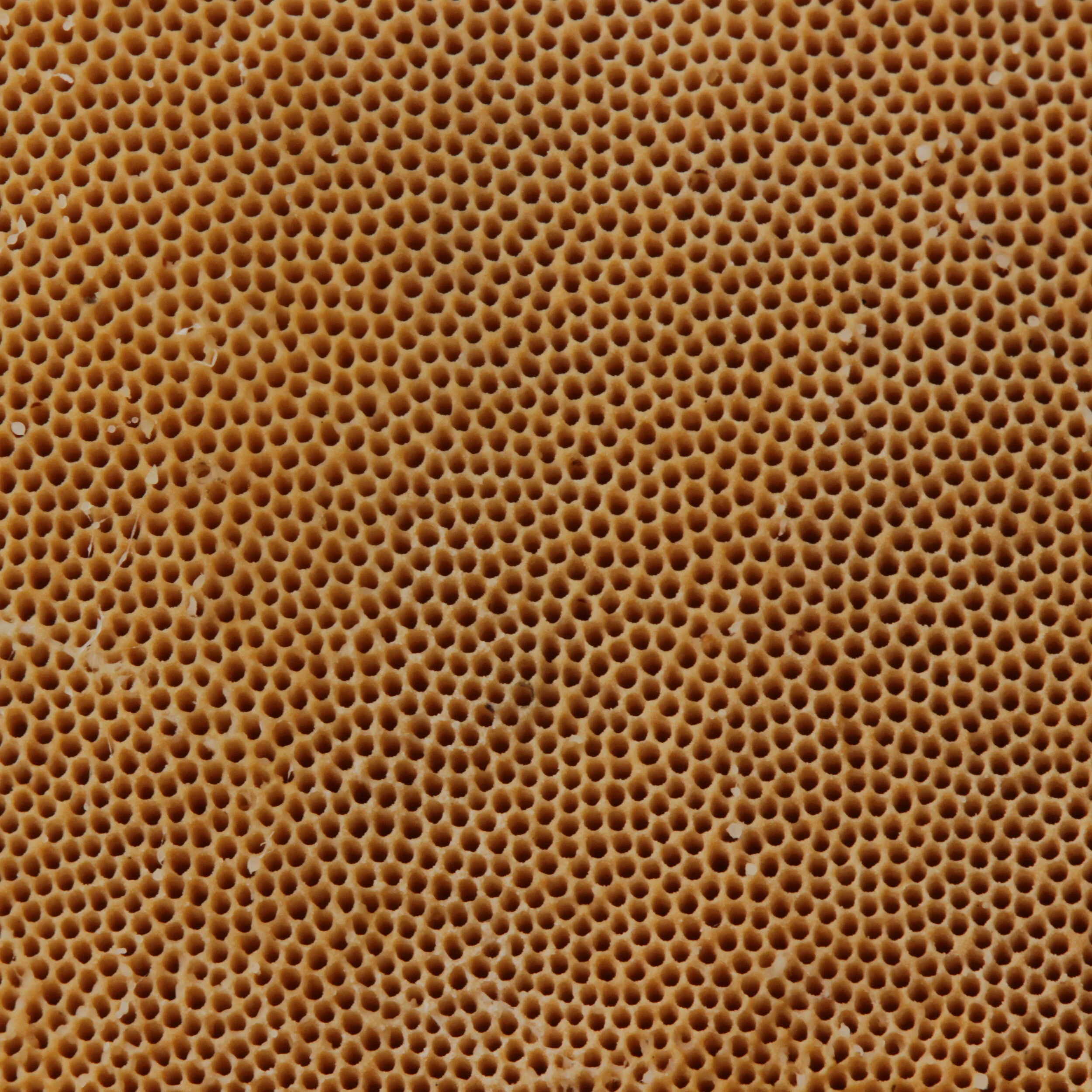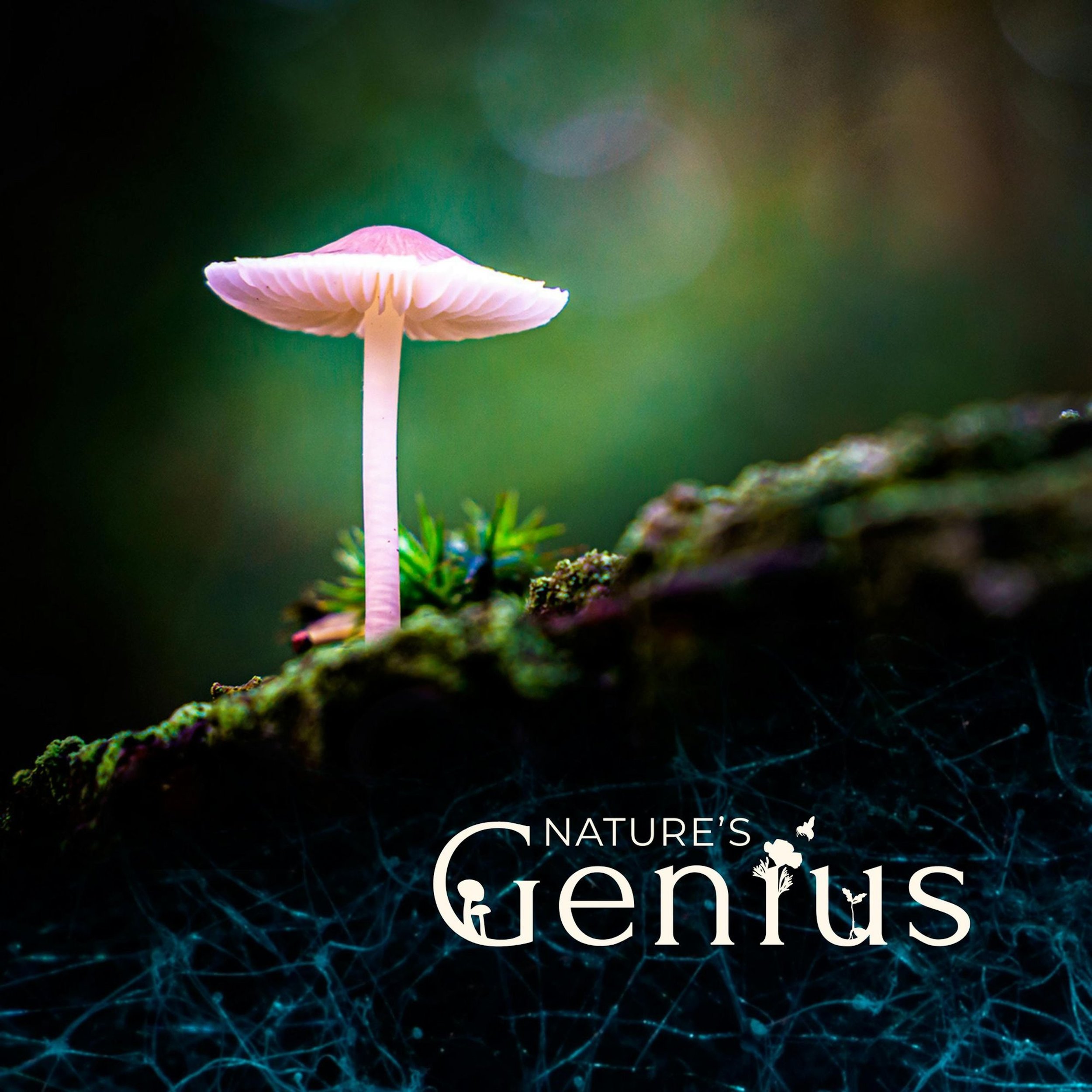EPISODE ARCHIVE
Season 1 | Season 2 | Season 3 | Season 4 | Season 5 | Season 6
Hyphaedelity | Scales of Change | Patreon Exclusive | Featured Guest Episodes | Storymap
Season 6
What do you call it when a population of podcasts mysteriously drop episodes on the same topic at the same time? It's Critical Mast! We're so proud to present this nutty experiment in community podcasting, with its roots going back to the very beginning of our show (and to the beginning of our dedication to silly puns).
Thanks to help from our pals at Jumpstart Nature, Golden State Naturalist, Learning from Nature: The Biomimicry Podcast, Nature’s Archive, and Outside/In, it's time for a bumper crop of podcasts about (or inspired by) the mysterious phenomenon known as masting: where plants somehow synchronize their seed production across staggering distances.
Today, through a series of conversations, we’re exploring the notion of what it means to have a relationship to land, to be or not be of a place (in other words, to belong or not) and how the intrinsic tensions in all that may be metabolized through the practice of art, and more importantly, that of life.
The Miyawaki Method of micro-forestry is a viral sensation: sprouting tiny, dense, native tree cover in neighbourhoods all around the world. With the promise of afforestation at a revolutionary speed, this planting technique has become the darling of green-space enthusiasts, industry, and governments alike —yet few professional or academic ecologists have commented on its efficacy, or even seem to have heard of it!
In this episode, we debate the legacy of Dr. Akira Miyawaki: the man, the myth, and the method.
When is it ethical to kill one thing to save another? Lethal intervention is a common practice in the field of wildlife management, especially when the survival of a species hangs in the balance
In this very special donkumentary, we’re headed to the Mojave Desert — to Death Valley, in particular — where we find one animal at the centre of a heated debate in land management: the hardy wild burro (AKA donkey, ass, or Equus asinus).
Food security, climate adaptation, and vibrant biodiversity all in one place — welcome to the ancient and diverse technologies of Sea Gardening. These widespread (but often overlooked) monumental rock features are proof positive of thriving Indigenous maricultural systems all around the Pacific Rim, since time immemorial.
Season 6 kicks off in the deep dark woods: the simplified, post-industrial forests of the world — the only forests that many of us have ever known.
Join us as we meet foresters in British Columbia, Vermont, and Scotland, all working to embrace the messy art of ecological forestry. Because if we want our forests to be old growth-ier, we might not be able to just wait and leave them alone. It might mean challenging some assumptions and getting out of our comfort zone, but that's what it'll take to see the forest for the trees.
Season 5
On this episode: Zoë Schlanger (author of the newly-released, New York Times bestselling book The Light Eaters: How the Unseen World of Plant Intelligence Offers a New Understanding of Life on Earth) takes us to the misty rainforests of Chile and back to report on what might just be the world’s most extraordinary plant — hidden in plain sight.
In this conclusion to our trilogy, we're looking at a proposal to move beyond the concept of "rangelands" through the rewilding of the American west — meaning, the return of forgotten landscapes, species, and ecologies not commonly seen in generations (not to mention improved water and carbon storage). But at least one thing isn't compatible with this vision: grazing cattle on public lands.
Our series on cows and rangelands continues in the weeds and in the thorns, looking at a specific piece of public land where livestock are being employed to give some endangered species a new lease on life.
The introduction of cattle to western North America has undeniably contributed to massive ecosystem change. But could cows be as much a part of the solutions as they are the problem?
How do we account for nature? We can build on it and we can take from it, but what is its intrinsic value — in and of itself?
On this episode: Adam Davis (of Ecosystem Investment Partners), and a cultural transformation happening right now — reshaping the intersection of environmentalism and capitalism. Welcome to the restoration economy.
Meet the Fire Watchers of Skeetchestn: the people keeping their community safe during nearby wildfires, and working to bring good fire back to the land. Join us for this conclusion to our visit to Secwépemc territories as we discuss a way to bring different knowledge systems together: a synthesis of western science and Indigenous understanding.
What happens after the smoke clears? What does recovery look like when the disasters never end? In this episode, we're visiting the sites of some of BC's biggest burns of 2017 and 2021 – making the link between the mega-fires and the floods and landslides that followed. We'll hear about how the land is (and isn't) recovering, and the factors that spell the difference.
In this bonus conversation, Adam catches up with Fern Yip (guest producer on FE2.3) about her recent close call with wildfire, with lots of practical advice for those living on forested lands.
How do our dreams shape our reality? Tonight, with the help of scientists, artists, philosophers, and historians, we're sprinkling a little stardust on our understanding of the more-than-human — from fish, to demons and gods.
Spiders Song is a story about a quest to hear the greatest symphony on Earth: the music of evolution. Along the way, we get to know some of nature’s most surprising musicians — the paradise jumping spiders.
Season 4
The last episode of our 4th season: a sympoietic stream of consciousness; on language, art making, and more-than-human interconnection.
In a forgotten corner of a national archive, some very heavy boxes held a rare promise: an opportunity to look back in time at a landscape scale.
Can we sequester our carbon and eat it too?
For the first time in 4 seasons, we're discussing natural climate solutions, and in particular, regenerative agriculture. Joining us is agrologist and fellow podcaster, Scott Gillespie (of Plants Dig Soil) to get into the nitty gritty of farming for soil carbon — its promise, possibility and feasibility.
A story of memory, ghosting, and fire: how we can change the place we call home, and how it too can change around us.
What does it mean to live on an island? Is it to be independent from, or inexorably dependent on the rest of the world? And when the ecosystem's physical limitations are so clearly circumscribed, do people behave more "environmentally"?
In this episode, we visit Adam's home island of Galiano, and find out just how big its ecological footprint really is.
The North American Model is just one story of how wildlife conservation can be practiced. In part 2 of this mini-series we tell another: of restorative human–predator relationships and local self-determination.
North America abounds in wildlife — but why?
At the turn of the last century, many observers believed that species that we take for granted today would disappear forever. In this episode, we share a story about the way that wildlife conservation came to be practiced, the lives that it privileged, and the lives that it left out.
What can a brand new patch of nature tell us about Europe's ancient history?
In this episode, we touch down in the Netherlands, where an unconventional experiment (the Oostvaardersplassen) has shaken up both the field of ecology and Dutch society.
As economic imperatives press up against ecological thresholds, a mega-project that has been in development for over a decade is poised to further alter the character of the estuary, with massive implications for the health of Salish Sea and its many residents. In this episode, we ask: can we find ways to hear each other through all the noise?
Are agriculture and biodiversity always at odds? In the late 1970s, a radical environmental movement rejected this dichotomy — rebuking conventional farming in favour of holistic & mutualistic principles, with the dual promise of plentiful food and a vibrant ecosystem.
Season 3
What is a border? Is it simply an edge: a sharp transition between one state and another? Or does it stretch beyond a single dimension, warping land and people through a self-perpetuating 'otherness'? In this final chapter of Goatwalker, we uncover the ties that bind ecosystems, identities, and communities of all sorts – migrant or otherwise.
Having finished his work in the Sanctuary Movement, Jim Corbett allowed his focus to broaden, bringing his system of ethics to the land itself.
A ragtag group of self-proclaimed 'goatherds errant', led by philosopher-turned-rancher Jim Corbett, took it upon themselves to enact U.S. immigration law at the grassroots level. In so doing, they sparked a national movement.
Jim Corbett was not your typical rancher. Over the course of decades roaming the borderlands of the desert southwest, he developed a practice that he referred to as 'goatwalking' - a form of prophetic wandering and desert survival based on goat-human symbiosis.
Mushrooms that smell? Fungi can be pungent, provocative, and at times irresistible. While we might not always recognize it, we're in constant chemical communication with the world around us through olfaction. In this episode, we stop to smell the Russulas – examining the fascinating fragrances of Kingdom Fungi.
In collaboration with the Serpentine Galleries, we present a poetic collage featuring the voices of The Understory of the Understory: a virtual symposium bringing together practitioners from many disciplines to consider the ground beneath our feet across ecologies, politics and spiritualities. With vignettes ranging from co-evolution to condensation, from medicine to mycomorphism, and from death to dust and back again.
Guest producers Sadie Couture and Russell Gendron explore the concept of invasive species through a look at a small island community, a species doing some serious damage to the ecosystem, and the complex issues at play when a plant or animal moves into a new territory.
Hyper-ecologies; novel ecosystems; freakosystems – different names for the same thing: never-before-seen assemblies of lifeforms, born of human disturbance. These profoundly weird ecologies are persistent, and (through a certain lens) often functional.
As we continue to discuss the practice of ecological restoration, an important question emerges: is wilderness itself an illusion? We all have a picture of wilderness in our minds, but how did that image come to be? Join us for a tale of two simulacra.
Is “Nature” a real thing, or is it just an idea? When we talk about restoring ecosystems, what are we restoring them to? Or more precisely, when? This episode is the first part of a conversation between Mendel, Adam, and two of Adam’s mentors, wherein we explore what it means to practice ecological restoration as a form of art.
Scales of Change - the Dragons of Climate Inaction
Even those of us who accept of the science and urgency of the climate crisis can struggle to act on our own knowledge and values. Why? Our minds are subject to the Dragons of Climate Inaction: 36 different species of rationalizations – stories we tell ourselves consciously and subconsciously. In this series (supported by the University of Victoria) we explore the psychology of climate inaction, and prove that another story is possible.
Scales of Change is also available on its own dedicated podcast feed
This is our final chapter, and our last genus of Dragon: Immobilis – the dragons of Limited Behaviour. This genus contains only two species: Immobilis signum, or the Dragon of Tokenism, and Immobilis jevonsii, or the Rebound Effect. They are among the most pernicious dragons, especially for people who already care deeply about the climate.
In our sixth genus, we dive deep into the Dragons of Sunk Cost – the investments that work against our climate interests.
Some of these may simply be financial, but they may also be emotional: our goals and aspirations, our patterns of behaviour, and our attachments to the places around us.
When it comes to climate change, the risks are global, but distributed unequally. In this chapter, we explore what physical risk can mean to the people dedicated to the health of the planet, as we follow one woman’s journey to becoming a force of nature.
The Dragons of Discredence are agents of mistrust – the species of this genus are responsible for climate deniers, contrarians, and conspiracy theorists. But it’s not only the fringe that suffers from the dragons of discredence. They can act in subtle ways on all of us: casting doubt on well-intentioned policy, and dissuading us from aligning our self-interest with the interests of our environment. To tip the scales, we have to prove that there’s plenty of honey to go around.
Our third genus contains the Dragons of Social Comparison and Social Norms.
Every aspect of who we are is mediated by these Dragons: we adjust to the norms of our communities – the people we interact with, and the people we consider to be our peers around the world. As with everything, these norms are subject to change. Their flexibility is based on our collective willingness to share, and to listen.
When it comes to the climate crisis, community conversations – in whatever form they may take – are integral to our ability to adapt.
Meet our second genus of Dragons – Ideologies. These are constellations of beliefs and values; filters for understanding the world.
One species of Ideology has flourished in the modern era: the Dragon of Technosalvation – A belief that technology can fix all our problems, and by extension, the climate.
In this chapter we meet our first genus of dragons: Artusnoia – the dragons of Limited Cognition.
Among them, the twin dragons of Perceived Behavioural Control, and Perceived Self Efficacy (A. impotens & A. parvoperitia, respectively) are perhaps the greatest challenge to meaningful climate action. Join us as we discover the subtle shifts that can make all the difference.
Before we lace up our boots and head into the field, some introductions are in order.
What are the Dragons of Climate Inaction? Where do they come from? And why, especially now, are they so important?
Season 2
To find out what the future might hold for Kelp, Sea Otters, Urchin, and Abalone, we're taking you to Haida Gwaii – an archipelago famous for both its deep culture and unique ecology. In Gwaii Haanas, the Islands of Beauty, a surprising experiment is taking shape, and we're going to dive right in.
We go from mountain top to sea floor, and we finally get to meet the fastest snail in the west. This is Part Three of Kelp Worlds.
Ecological science has had a persistent blind spot: the deep involvement of Indigenous peoples in managing their lands and waters. The return of Sea Otters from the brink of extinction, while celebrated, was enacted under a framework of settler colonialism. As voracious predators themselves, otters compete with humans for all of the same sea foods. One shellfish in particular has become a flash point for fisheries – a modest mollusc, Haliotis kamtschatkana: Northern Abalone. This is Part Two of Kelp Worlds.
How did nuclear testing accidentally reshape our understanding of food webs and marine ecology? Why did sea otters bounce back from near-extinction on some parts of the Pacific coast, but are still absent in others? We speak with Dr. Jim Estes (a godfather of the field) about a series of serendipitous events that led to the re-writing of textbook ecology. This is part one of three of our series on kelp worlds.
A more efficient world is simply cleaner, greener, and more sustainable. Or is it? This month, we’re exploring some of the ways we can reset our long-standing paradigms of labour, productivity, and efficiency. Take a break with us.
The world is full of sound. With the help of Hildegard Westerkamp, Bernie Krause, and Nick Friedman, we untangle some of the amazing ways that we can learn about our planet by listening to it. Join us as we explore the nature of sound through the sounds of nature. Featuring sublime electroacoustic composition, stunning field recordings, and cutting-edge scientific research, it all begins by listening.
No matter where we call home, the land beneath us has been in a long and constant relationship with people. Some of these people may be our ancestors, some may not. This episode is about how we move forward from a fragmented past; how we build community in our shared spaces; and how a women-led movement can bring collective healing to a deeply storied land. Come with us to Ohlone territory – from Tuyshtak (Mt. Diablo) to the East Bay, and meet the Sogorea Te’ Land Trust.
Who, or what, is a Naturalist? With the help of author Briony Penn, we trace the intertwined stories of two pivotal characters in the modern environmental movement: Cecil Paul (Wa'xaid) & the late Ian McTaggart-Cowan. These larger-than-life figures inspired a generation to reconnect, intellectually and spiritually, with the natural world. Associate producer Fern Yip investigates what it all means to the youth of today.
Another year, another fire season. We’ve already had a lot to say about wildfire, forest science, traditional ecological knowledge, and prescribed burning, but we’re not done yet! In this episode, we tour the Province of BC (and dip down into Washington State) to meet vigilante fire fighters, researchers, and First Nations Chiefs: all working in their communities towards a future of true wildfire resilience.
Lichens: ecosystems unto themselves. They’re diverse, apparently ubiquitous, and foundational to life on terrestrial earth. But this episode isn’t really about lichen. It’s about an endangered species that relies on a lichen diet – a diet that is disappearing as fast as the old growth forest in British Columbia.
Season 1
Forever is a really long time. This episode is about death, and its transformative power on the landscape. It’s also the last episode of Season 1. This episode takes a broad view through the lens of ritual, urban planning, and ecological entanglements, with a distinct focus on the Salish Sea.
In this conclusion to our series on dam removal, we travel from the Klamath up to the Olympic Peninsula, and the site of the former Elwha and Glines Canyon dams. What did it actually take to bring the dams down, and what lessons can we take forward to other ambitious ecosystem renewal projects?
Dams remain one of the ultimate demonstrations of human power over nature. Wild rivers can be tamed to deliver energy for industry, lakes for recreation, and water for agriculture. But severing the link between land and sea has come with grave ecological costs. This is part one of a two-part series on dam removals. In this episode, we return to the Klamath river to examine the fierce conflict (and unlikely partnerships) in pursuit of the deconstruction of 4 major dams.
How are human activities changing our oceans, and why do these changes all seem to support a new age of jellyfish? What are these ancient, diverse beings: harbingers of doom, or simply the most well-adapted form of life in the sea? In this episode we go jellyfishing for answers with preeminent jellyfish researchers Dr. Lisa-ann Gershwin and Dr. Lucas Brotz.
In the fall of 2017, a series of devastating earthquakes rocked southern Mexico. But what if it’s not the earthquakes themselves that pose the greatest threat to these communities?
In this second part of our two-episode series, On Fire, we look at ways to move our civilization forward – without continuing to deny the role of fire in our landscapes. We discuss how prescribed burns are currently conducted, radical new (and old) perspectives on land management policy, and practical techniques for everyone in fire country to protect their homes, their communities, and their forests.
The past two years have been the worst fire years on record across the west coast of North America, with whole communities being engulfed in flames and smoke enveloping major cities for weeks. But as the airways fill once again with stories of valiant fire-fighters and people who’ve lost their homes, we answer some burning questions that seem to always fly under the radar.
During the devastating September 9, 2017 earthquake off the coast of southern Mexico, residents of Mexico City and Quetzaltenango, Guatemala witnessed mysterious bursts of light in the sky. These lights, however, were not UFOs, exploding transformers, or evidence of a mysterious government conspiracy - instead, they were representatives of an age-old phenomena known as “earthquake lights.” What could be causing these lights in the sky before, during, and after earthquakes?
What do you do when you find the last individual of a species previously thought to be extinct? The two rarest plants on earth both live in the Presidio of San Francisco, they’re both in the same genus, and there’s only one left of each. Is there a future for these species, and if so, what does it look like? And what can species on the brink tell us about ourselves and the future of our ecosystems?
The story of modern-day North America begins with the systematic genocide and displacement of indigenous peoples. The social and ecological consequences of this founding trauma have become clearer over time, but so far relatively little has been done to address this at the federal, state, and provincial levels.
Future Ecologies is recorded on the unceded territories of the Musqueam (xwməθkwəy̓əm) Squamish (Skwxwú7mesh), and Tsleil- Waututh (Səl̓ílwətaʔ/Selilwitulh) Nations - otherwise known as Vancouver, British Columbia. But what does that mean?
Storymap
Everywhere the podcast has been, sometimes in person! Click a pin to discover what episode it’s from.
Hyphaedelity
Introducing our spin-off format: Hyphaedelity (which will ironically be somewhat lower-fi than our usual output).Here’s the deal: Hyphaedelity is our experiment in chatcasting, but with a twist. On each episode, we’re inviting a past guest from Future Ecologies to conduct their own interview, and bring us all along to sit in on their conversation.
We've got another edition of our intermittent interview show for you, this one featuring Sadie Couture (FE3.4) in conversation with Hannah Tollefson. This episode focusses on Hannah’s writing on the Port of Vancouver, the concept of "tidewater", the nature of logistics, and the supply chain in which we’re all entangled. Don't miss it
In this edition of Hyphaedelity, our interlocutor Adam Davis (EIP, FE5.6) and his guest Tim Male (EPIC) discuss going from working at an environmental NGO to within the White House, the role of executive orders, the state of environmental regulation, effecting change, the voting age, and much more (from a vantage point of January 30, 2025).
This inaugural episode of Hyphaedelity brings together Sarah Jim (of Scales of Change, Chapter 6) and Lucas Glenn, to discuss Lucas's ecologically engaged art practice as the former artist-in-residence for the city of Kelowna.
Support Future Ecologies to get these episodes (plus early releases of our regular show) delivered directly to your favourite podcast app
Saxon and Mendel chat through some cutting room bits and pieces from FE6.3 — Get Yer Ass Outta Here!
Mendel's conversation with Skye Augustine: a leading voice uplifting the science, history, and culture of sea gardens.
If you were paying close attention to FE6.2, you may have caught a mention of the very first Clam Garden wall built in the modern era, by the Swinomish Indian Tribal Community. In this conversation with Joseph Williams, Shellfish Community Liaison for Swinomish, we get into the details of how they made it happen.
In the Autumn of 2024, Adam visted Tal Engel of Wolftree Integrative Forest Rehabilitation, and took a tour of the woodlands which serve as a living laboratory for Tal's experiments in ecosystem revitalization and forest fire fuel management.
If you take care of any forested spaces, we're sure you'll be inspired by some of Tal's techniques.
Adam and Mendel play "guess that sound" with recordings from the ongoing forest restoration project on Quadra Hill, Galiano Island.
We're back!! Thank you all for waiting so patiently as we lined up the pieces for Season 6, which will be kicking off very soon indeed.
In this Q+A follow-up to FE5.6, we're digging even deeper into the practice of Mitigation Banking, where ecosystem restoration (and nature itself) may be a profitable investment at scale.
While that episode was effectively a monologue for storytelling and stylistic reasons, this conversation gets into the weeds of offsetting, how credits are assessed and monitored, land trusts and permanent stewardship easements, intersections with real estate and Indigenous land back, permitting and project impacts, and Adam Davis's philosophy vis-à-vis capitalism.
In FE5.1 & 5.2 we got to know jumping spiders primarily through a single genus: Habronattus, the paradise jumping spiders. In this bonus conversation with photographer Michael Lun, we discuss the only genus of jumping spiders that can claim to be even more bedazzling: Maratus, the peacock jumping spiders.
Okinawa, 2019: Producer Simone Miller and Dr. Nick Friedman set off into the Yanbaru Forest to visit one of the OIST Ryukyu Soundscapes Project field sites, for FE2.5 - The Nature of Sound.
Despite being briefly blocked by several unscheduled wildlife road crossings, they reach the field recorder and witness the procession of insect and bird calls from day into dusk.
We’re speaking with documentarian Dan Pierce, director of Heartwood: an ongoing series of short films exploring the ecological, social, and economic impacts of industrial logging
Please enjoy some of the unabridged presentations from The Shape of a Circle in the Dream of Fish, which were reconstituted into FE5.3 - Cosmopoetics. First up: Alex Jordan.
Get to know our friends and collaborators, Miriam Quick and Duncan Geere — the hosts of Loud Numbers, a data sonification podcast. How do data visualization and sonification differ? What are the possibilities and pitfalls? And how can you incorporate the practice into your life?
Jonathan's work is in both FE4.10 Geopoetics and the Emergence Magazine piece we recently featured: When the Earth Started to Sing — music in the former, and paleo-soundscapes in the latter.
One sunny day this past April, Wil and Mendel travelled to Adam's home studio on Galiano to record the first takes for FE4.6
Our friend Michael Hathaway (featured in FE3.6) has now published his book, entitled "What a Mushroom Lives For: Matsutake and the Worlds They Make" — and, unsurprisingly, it's great.
The first Future Ecologies audio ask-me-anything session, exclusively for our fine patrons.
If you've already listened to FE3.6, you heard just a taste of some recordings we made almost 3 years ago – at the blooming of the Titan Arum (Amorphophallus titanum) at the Bloedel Conservatory
A fruitful bog walk in Haida Gwaii reveals a delightful treat – A berry thought by some to be completely extirpated from the archipelago: Rubus chamaemorus, or cloudberry.
Seaweed Sojourning
For our third seaweed sojourn, we meet Ulva, a green seaweed, and trace the evolutionary history of algae (and lots more).
For our second seaweed sojourn, we're diving into the complexities of reproduction and cultivation. This is a Nori Story.
For a new season of bonus Patreon mini-episodes, we’re going beyond kelp worlds to meet the rest of our seaweed sojourners.
Meet Your Fungal Associates
Take a walk in the woods, and a mushroom you’re guaranteed to find (any time of year) is a polypore. They’re tough, occasionally massive, and one of the most important features of many terrestrial ecosystems.
Truffles, famous for their aphrodisiac effects, are one of the world’s most expensive foods. Their tantalizing flavours have recruited an entire industry of truffle hunters, obsessed with recovering these subterranean morsels. In this episode, we take the truffles perspective as we wonder why they yearn to be unearthed.
Sex is the raison d’être for many of life’s strange contortions, and fungi are no exception. The visible mushroom exists solely as a sexual organ: disseminating the spores of the next generation. But that’s only the beginning of the weird world of mushroom courtship. Join us in the nitty gritty, and reflect on what mushrooms can teach us about the nature of sex and gender.
How do mushrooms know the world around them? In this episode, we explore just a few of the ways that a fungus (without a brain, ears, or eyes) can feel with precision. Mendel gets extra nerdy on this one.
On today’s episode, we’re talking parasites: from pathogens, to freeloaders, to downright mushroom cannibals. Mendel is joined by Willoughby Arevalo to discuss some of the most far-out ways in which fungi can mooch for their livelihood, along a spectrum from benign to hyper-destructive.
Spores: the raison d'être of mushrooms. Invisible, ubiquitous, these tiny grains are in every breath we breathe. In this episode we learn a little more about how they work, and how they shape the world around them.
For many people, forest fires bring to mind one particular mushroom: the highly prized morel. Every year, thousands of humans scour the sites of the last year’s burns - hoping for a profitable harvest. But what are these fungi? What… are any fungi? Mendel waxes solo.
New season, new kingdom! As your resident mushroom fanatic, Mendel will be hosting our new series: Meet Your Fungal Associates. On this month's episode we get a little deeper into lichens, and explore the blurry edges of life, mutualism, and extremophiles.
Meet your Jellyfish Overlords
We've unlocked our 11-episode Patreon series – Dr. Lisa-ann Gershwin, and occasionally the two of us, dive deep into jellyfish species and phyla in this mini-episode compendium.
This is it - the last of our Jellyfish Overlords series. Today we're featuring Salps, Larvaceans, and Pyrosomes AKA your long lost pelagic cousins.
This week, we're introducing Polyorchis penicillatus (a.k.a. the bell jelly). This gorgeous jelly was once common, but now its medusae are as elusive as the mystery of its polyp stage.
Season 1 may be over on the main feed, but we've got a few more overlords for you yet! If you're familiar with your ocean fauna, you may have already heard of the order Siphonophorae, the Portuguese Man 'O War being the most famous member. Listen to learn more about this big, weird, stingy, stringy gang of sea goop.
We're back with more Cubozoans! Presenting the infamous Irukandji, which is a complex of similar species. These tiny box jellyfish pack a punch like no other, but you're not likely to see them coming. Listen and find out why you should take beach closures seriously.
Ctenophora! A diverse group of otherworldly beauty. These are the comb jellies, named after the rows of cilia they use to hum through the water. Today's mini-episode is a dive into the phylum Ctenophora.
We're back into our species dives with one jellyfish that opened the door to new era of genetic engineering, at its own peril. Meet Aequorea victoria, and its very special protein - GFP.
Meet a surprising little jelly: Bazinga reiki. Take a few minutes to learn about the strange and beautiful food strategy of this little trickster.
Dr. Lisa-ann Gershwin introduces us to Chrysaora achlyos, the Black Sea Nettle. Find out why this, one of the showiest jellies out there, exemplifies the words "jellyfish bloom".
We chat with Dr. Lisa-ann Gershwin about the incredible, biologically immortal, Turritopsis dohrnii. You've probably heard about this little jellyfish that can live, theoretically, forever.
In this mini-episode, Dr. Lisa-ann Gershwin introduces us to Chironex fleckeri, the Deadly Box Jelly.
Dr. Lisa-ann Gershwin introduces us to Aurelia labiata, the Pacific Moon Jelly. This mini-episode is the first of many to be released in weeks alternating our feature-length episodes. The rest of these mini-episodes will be exclusively available to our Patreon supporters.
Featured Guest Episodes
Our friends over at the podcast Cited have a new series out called “Green Dreams” — covering stories of radical environmentalist thought leaders, and the ripples they’ve left on the present day. We wanted to share with you the very first episode from this series, called “The Green Cosmos”, covering Gerard O’Neil’s 1970s vision for humanity’s passage to the stars.
With help from recordist/anthropologist/podcaster Louise Romain and musician/conservationist Javan Hunt, we're visiting the Caribbean. First, off the coast of Colombia, on the islands of San Andrés, Providencia and Santa Catalina, and next a musical excursion to Grand Bahama.
Imagine an underground web of mind-boggling complexity, a bustling cosmopolis beneath your feet. Quadrillions of miles of tiny threads in the soil pulsate with real-time messages, trade vital nutrients, and form life-giving symbiotic partnerships. This is the mysterious realm of fungi. Acclaimed visionary biologists Toby Kiers and Merlin Sheldrake guide us through the intricate wonders of the mycorrhizal fungal networks that make life on Earth possible.
Now in their 5th Season, "Hark", Threshold producer Amy Martin is exploring sound itself: investigating what it means to listen to the nonhuman voices on our planet — and the cost if we don’t.
In this piece, originally broadcast in 2 parts on The Wind (one of our favourite podcasts), producer Eleanor Qull is taking us on a pilgrimage in honour of, and in tribute to that most collective monarch — the monarch butterfly. Through those lepidopteran migrants, it’s a story of scale, agency, and spiritual offering in a changing world.
From UBC Centre for Climate Justice, Future Ecologies presents "The Right to Feel," a two episode mini-series on the emotional realities of the climate crisis. The first episode, “Climate Feelings” is a collection of students’ non-fiction essays and reflections on their personal realities of living with and researching the climate crisis. The first episode opens with an introductory conversation between Naomi Klein and series producer Judee Burr that contextualizes how this class was structured and the writings it evoked. The second and final episode, “Eulogies” is based on fictional writing from the class. Students imagine and eulogize something that could be harmed by the climate emergency, and then imagine a speculative future in which action was taken to mitigate that harm.
We’re borrowing an episode from one of our favourite podcasters: Ashley Ahearn is the independent science and environmental journalist behind several series covering life in the rural American West.
Adam Zaretsky is a bioartist who explores the manipulation of DNA, the fringes of genetic modification, and butts up against the ethical boundaries of science and beyond.
When the Earth Started to Sing; Produced by Emergence Magazine, this sonic journey written and narrated by David G. Haskell brings us to the beginning of sound and song on planet Earth.
Four years ago, the Drilled podcast asked a question that changed how people thought about climate stories: What if we stopped acting like the climate crisis was inevitable and instead treated it like it truly is...the crime of the century? Now, the original true crime podcast about climate change is back with a new season all about the opportunistic oil industry.
In this episode, Anja and Matthias go on an underground safari through the hidden jungle of the soil. We hear from Diana Wall about a tiny worm that is so tough it survives in Antarctica. Richard Bardgett introduces us to collembola, also known as springtails. Stefan Scheu and Maddy Thakur reveal which animals are considered the “wolves of the soil”, and Kate Scow delves into bacterial communities. How do all these organisms work together as a system?
Our latest episode — on soil carbon and regenerative agriculture — could never have fit everything that needs to be said on the topic. So, we're leaning on a couple of other podcasts that we think you'll love.
In this episode you'll hear about a novel grain that farmers are starting to grow, and that could be part of the climate solution. This is Hot Farm part 3: "Is Kernza the Grain of the Future?"
In this episode, Mendel and Sergio discuss podcasting, art, music, hope, and lots more besides. We hope you enjoy this peek behind the curtain into the making of Future Ecologies, and Mendel's unfiltered inner monologue.
A featured guest episode by The Wind: Listening to The Disintegration Loops during wildfire season — a review of William Basinski’s seminal album as a meditation on looping thoughts, physical disintegration, and fire.
We're featuring another guest episode. This time, from Canada's National Observer: an important new podcast called Race Against Climate Change
Our next guest episode comes courtesy of MEDIA INDIGENA. This is the first of a 2-part conversation with Dr. Max Liboiron, all about their new book: Pollution is Colonialism.
We’ve got an amazing 4th Season headed your way! While we’ve got our heads down for the rest of the year, we’re going to feature some episodes from other podcasts we think you’ll love. First up is an episode from the kind folks at How to Save a Planet.
What is queer ecology? How do queer theory and artistic practice inform environmental activism and climate justice? How can we think decolonisation and queerness together?
We're all living in the Plastisphere. The chemistries of plastic have proliferated throughout our ecosystems and our bodies. But widespread concerns over the impacts of plastic are relatively recent – arising from a line of scientific inquiry well within living memory.
While we work on Season 3, we're featuring an episode from one of our favourite shows: Plastisphere – "The Discovery of Plastic Pollution".
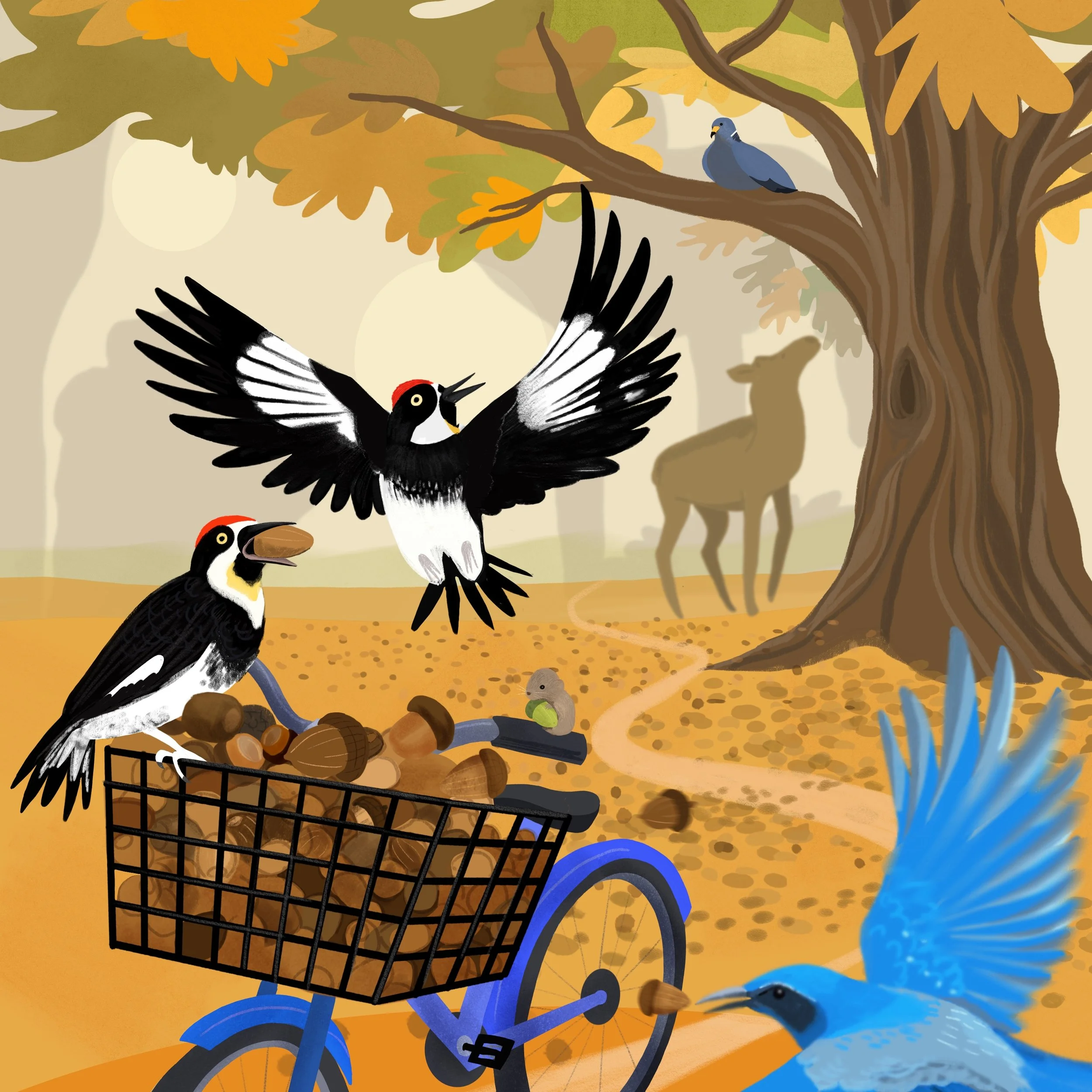
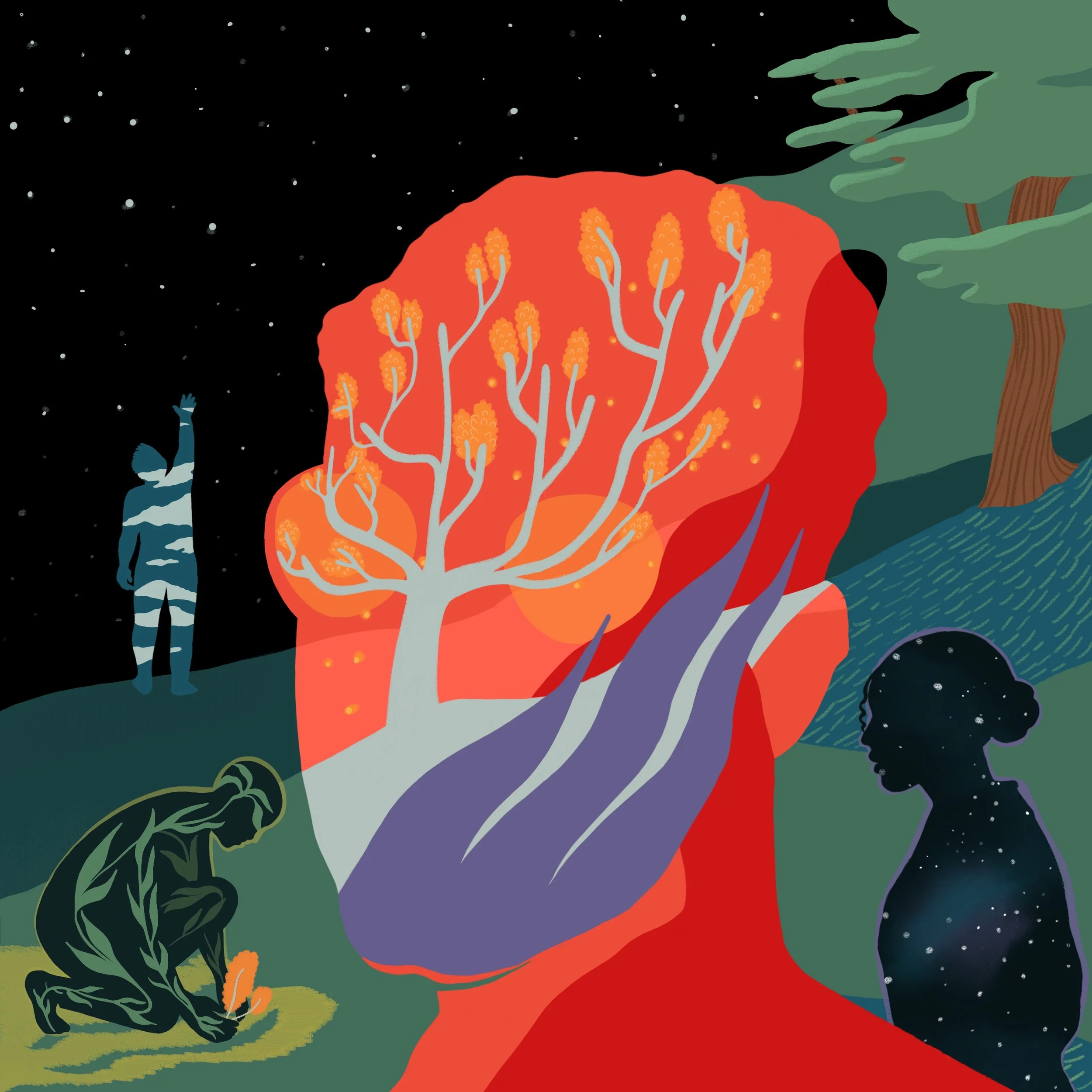
















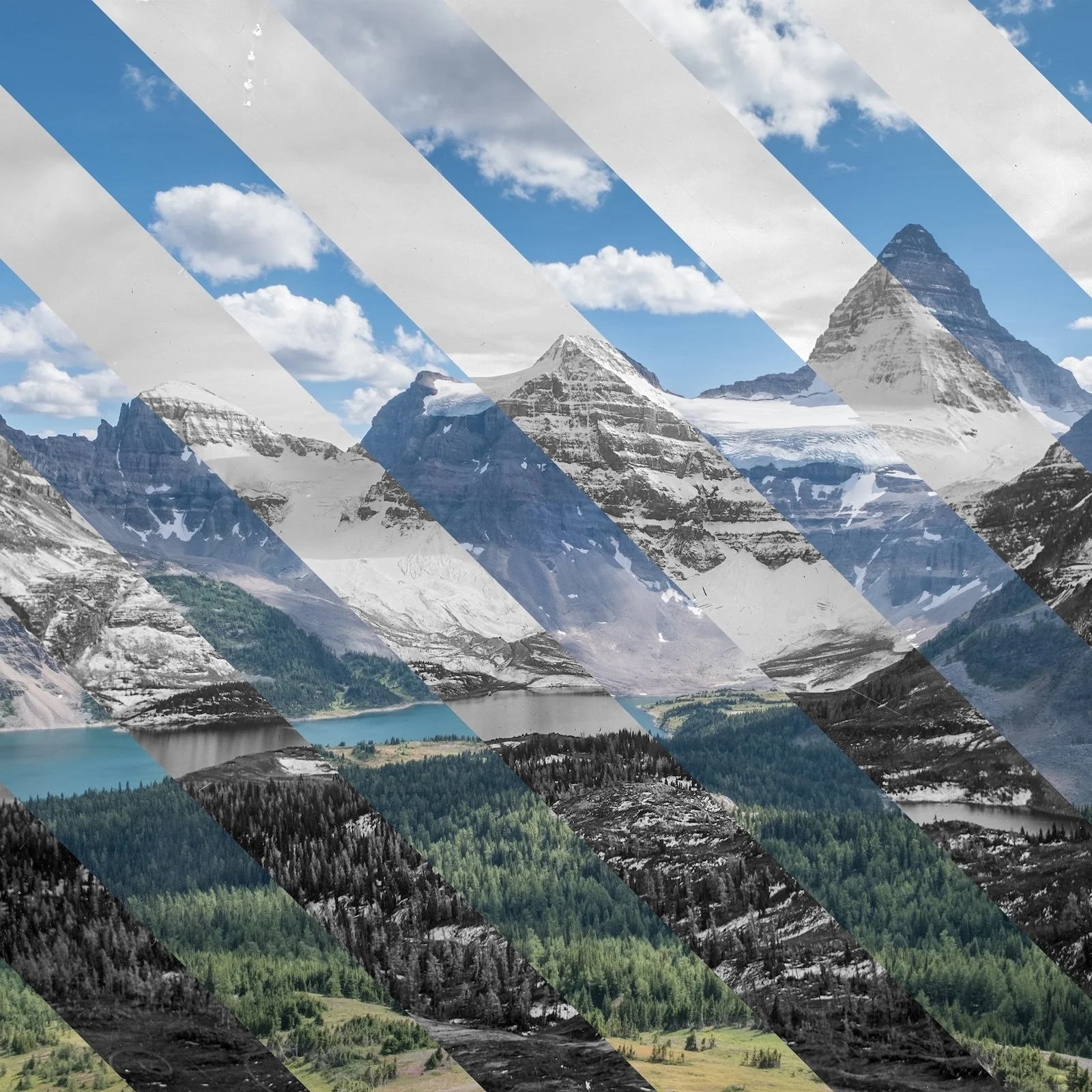




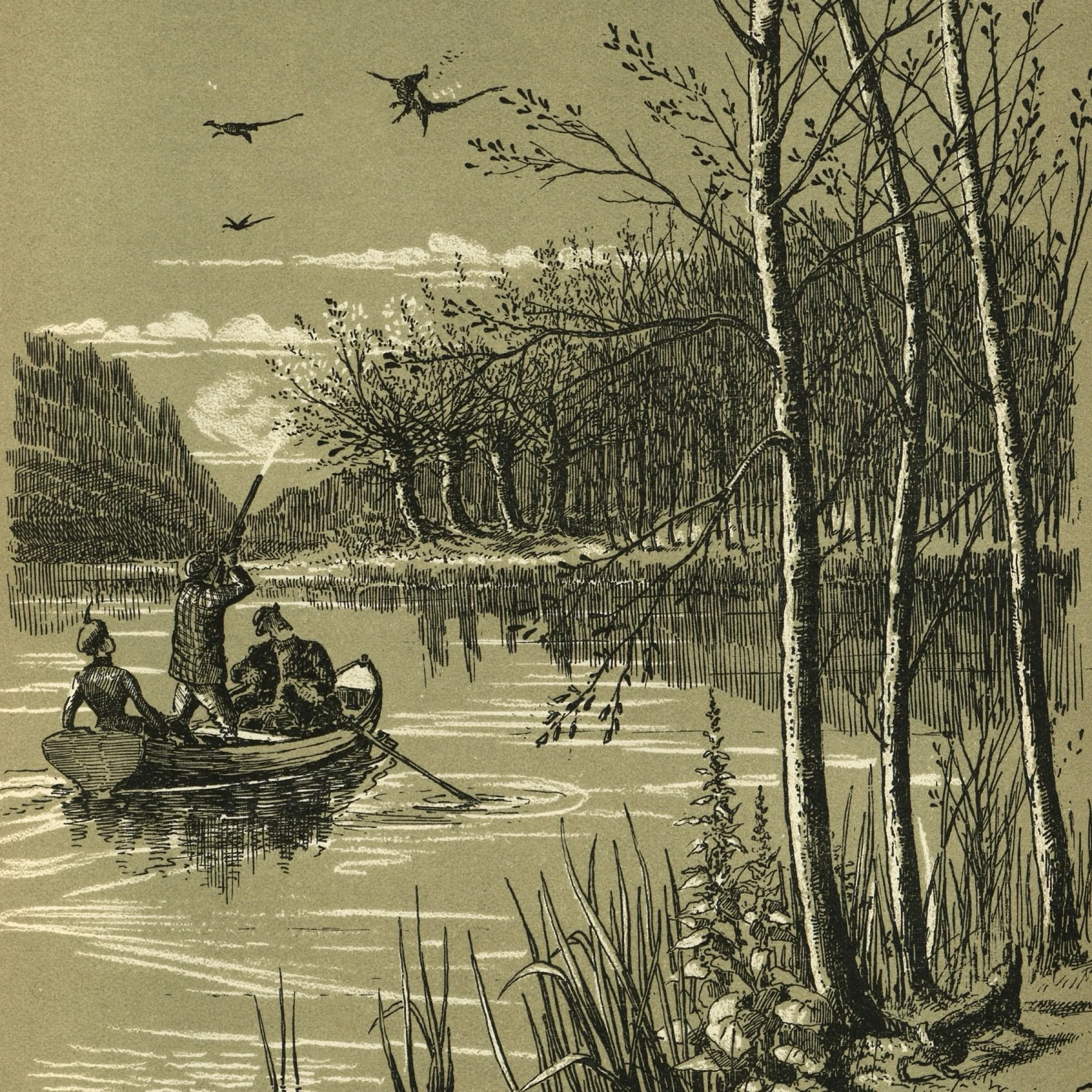
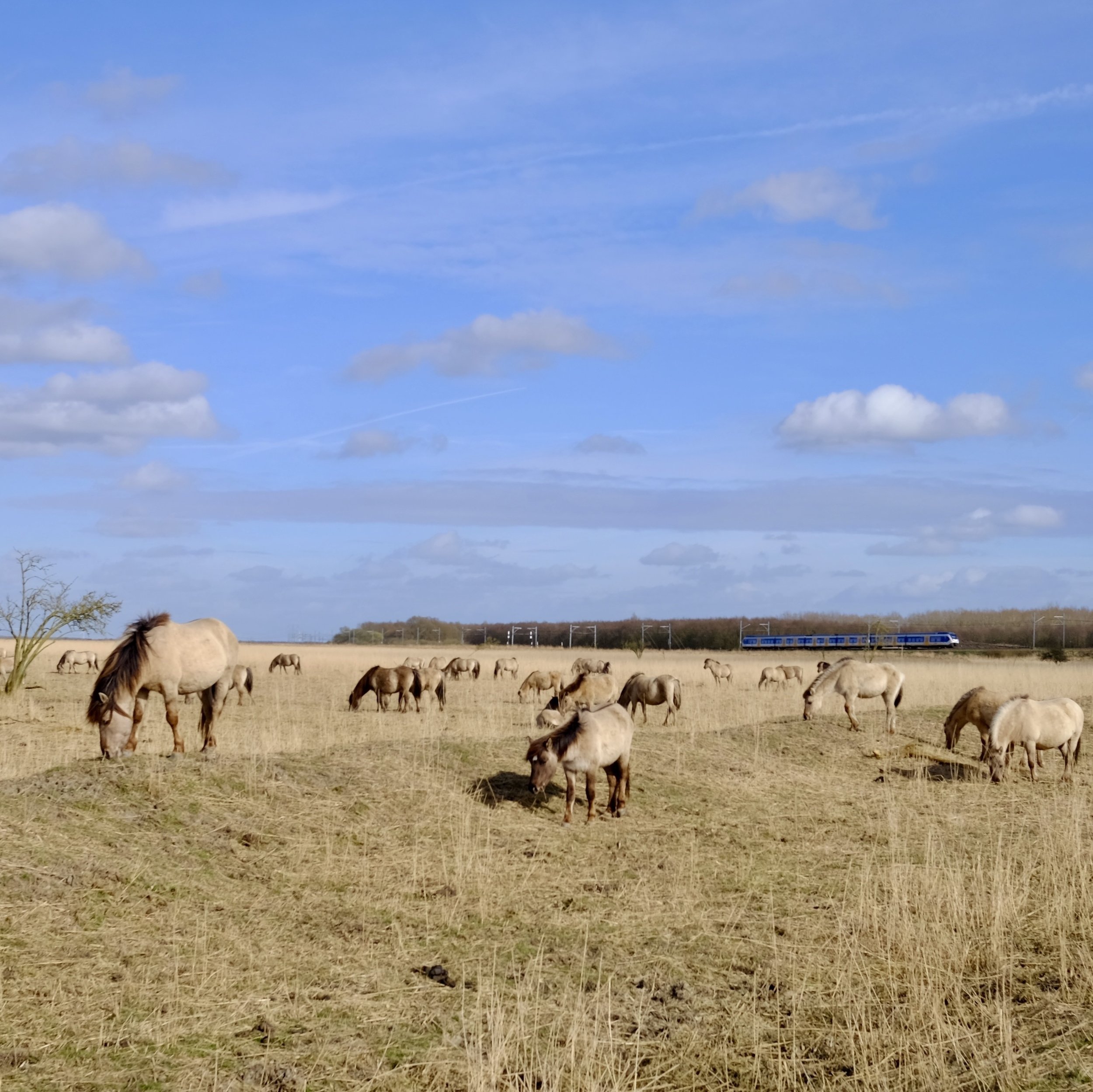






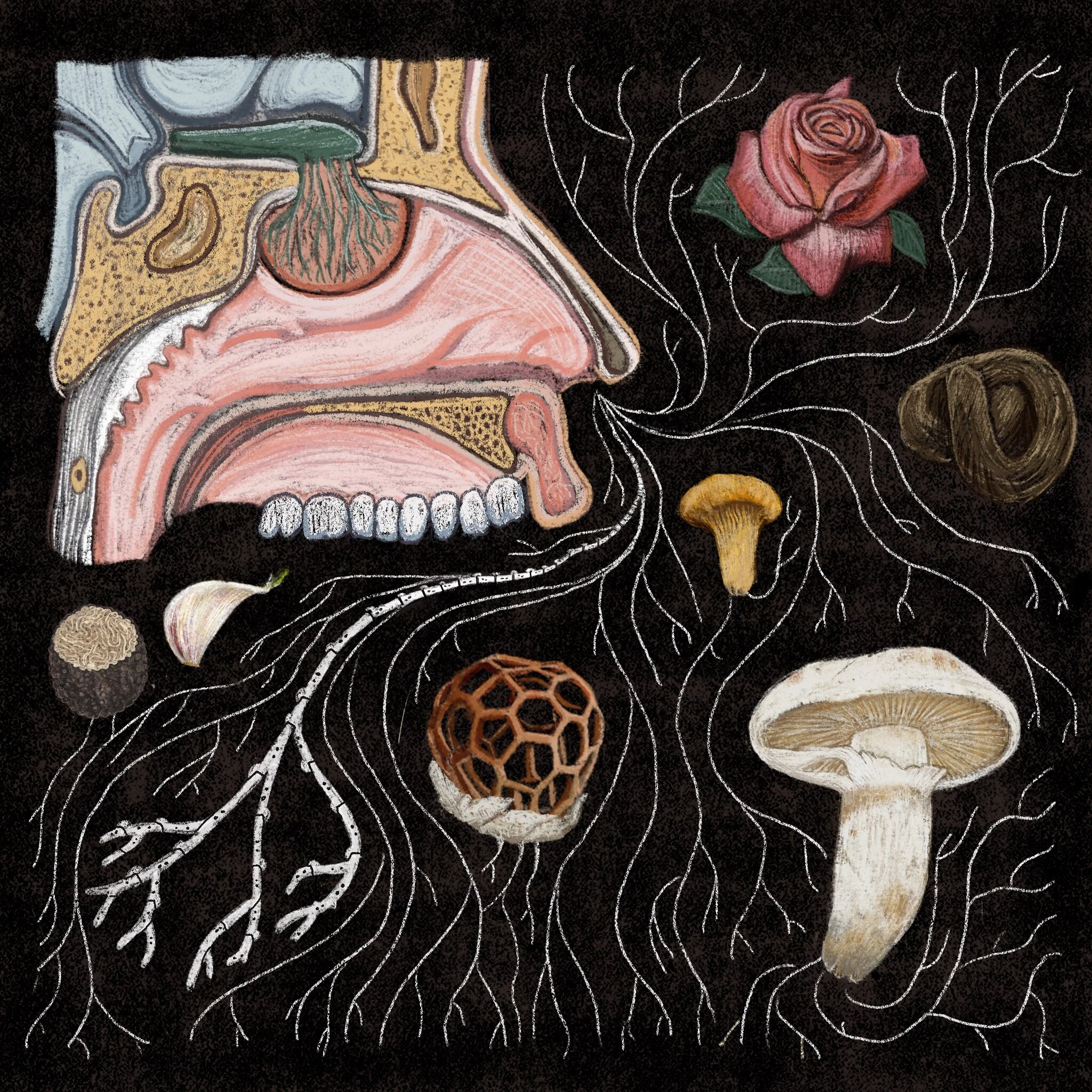

































![[HYPHAEDELITY] Sadie Couture x Hannah Tollefson — Tidewater and the Nature of Logistics](https://images.squarespace-cdn.com/content/v1/5a8e18cbb078699864fdba57/dbec45d0-049c-4ccc-9f8d-c15dbb2d09c2/Hyphaedelity+cover.jpg)
![[CONVERSATION] Saxon Richardson // Talking out of our asses (a donkey debrief)](https://images.squarespace-cdn.com/content/v1/5a8e18cbb078699864fdba57/d758004c-b9bf-4eb4-83b7-5733c7f24fd5/free-photo-of-donkeys-at-field.jpeg)
![[CONVERSATION] Skye Augustine // Diving Deep into Sea Gardens](https://images.squarespace-cdn.com/content/v1/5a8e18cbb078699864fdba57/b42ef838-a4b1-4b09-a7c9-c17bd7c49121/Bonus+feed+Unlocked.jpg)
![[CONVERSATION] Joseph Williams // Building a new Clam Garden](https://images.squarespace-cdn.com/content/v1/5a8e18cbb078699864fdba57/0230f1a2-34c6-4594-802e-c9abebc7d4ef/Bonus+feed.jpeg)
![[CONVERSATION] Tal Engel // Integrative Forest Rehabilitation](https://images.squarespace-cdn.com/content/v1/5a8e18cbb078699864fdba57/1734644202577-EUVV3745QORGP0I6PHB7/Tal+cover.jpg)

![[FIELD NOTES] Yanbaru Forest](https://images.squarespace-cdn.com/content/v1/5a8e18cbb078699864fdba57/054d0a41-24a2-4bfc-b6f6-6d57fc3c0d76/Habu+snake+Yanbaru+roadtrip.jpeg)

![[UNABRIDGED] Federico Campagna // How to Dream Better](https://images.squarespace-cdn.com/content/v1/5a8e18cbb078699864fdba57/c1452b09-2e39-4dad-af18-8b95ce0d3f6d/Dream+teaser.jpg)


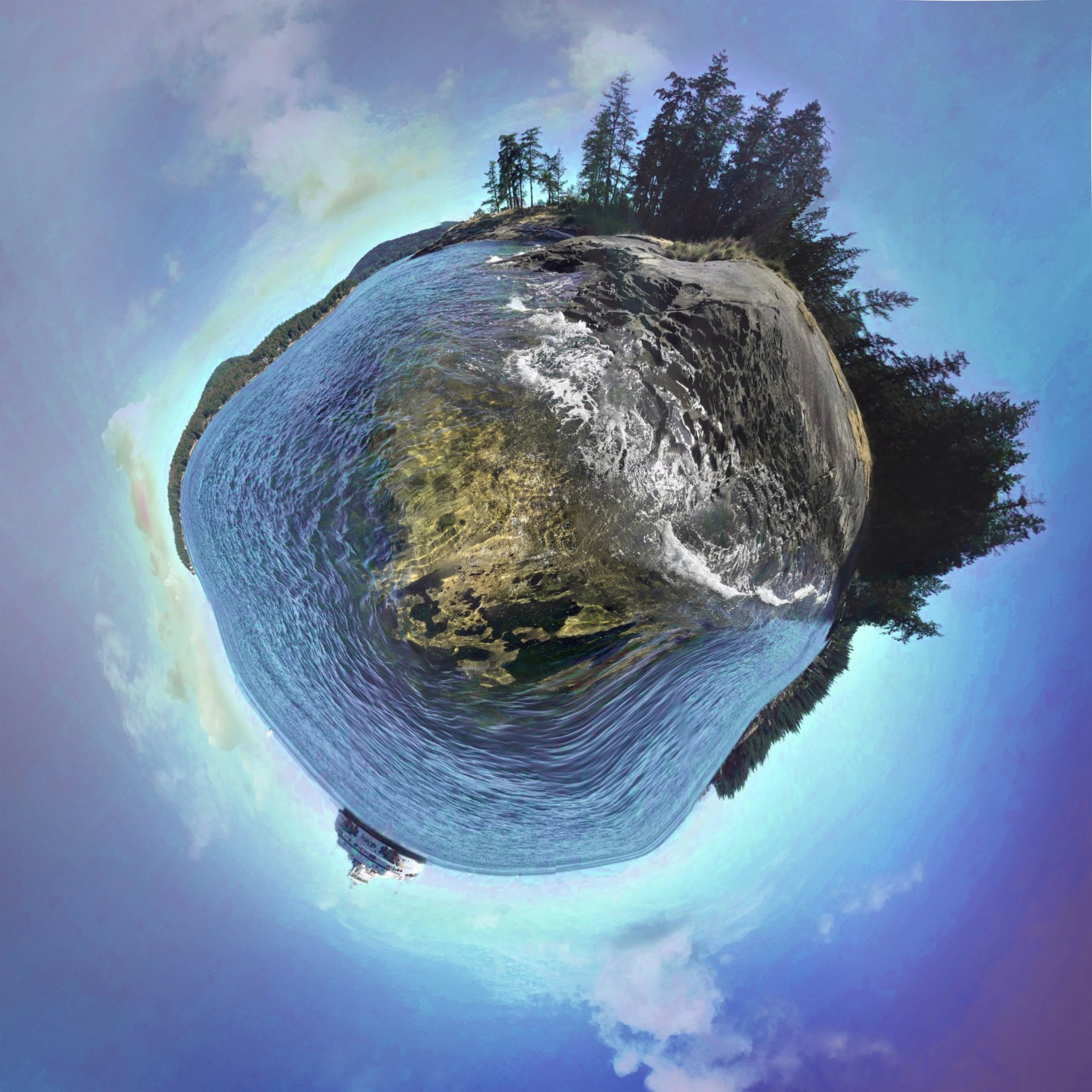






![[UNLOCKED] Seaweed Sojourning 1: Light and Colour](https://images.squarespace-cdn.com/content/v1/5a8e18cbb078699864fdba57/1605286069860-3MW6SXOXTWMVIQLNXBNA/Row+leaf+by+josie.jpeg)
